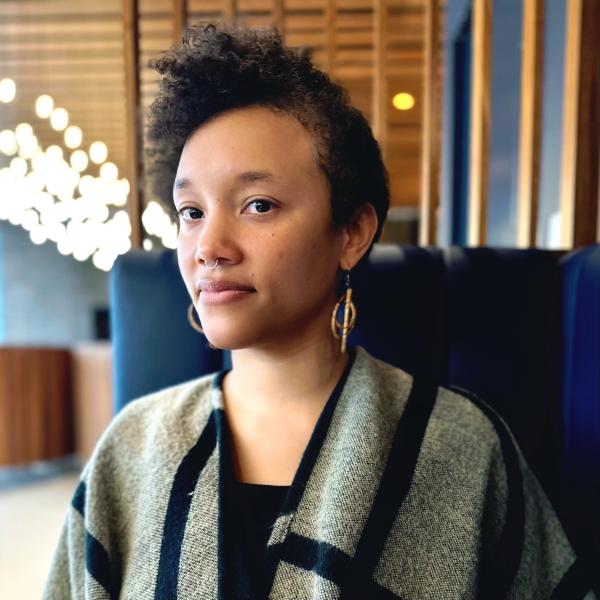
Biography
My research and teaching are both concerned with seventeenth through nineteenth-century archives of slavery and marronage in the United States and Caribbean. I am interested in how resistance practices and flight from enslavement by Black and Native individuals in the Caribbean and North America shaped textual and visual production in the colonial period. I teach transnational literary histories of slave and maroon narratives, constructions of gender, race and forms of bondage before 1850, as well as courses on archival theory and method.
My book project, titled for now, Going Maroon and Other Forms of Family, considers the lives of individuals who decided go maroon, the importance of kin and chosen family in those decisions, and some of the unexpected places that maroons are located when they trigger the archive. To escape enslavement but remain within the slave state or colony was the primary option for those living before widespread abolition of slavery. When such flight and the forms of freedom it allowed did not lead someone to a large, established or overtly political maroon community, resistance and sabotage of both state institutions and the written record took place in swamps and forests, but also in prisons, hospitals, and Indian Nations. With a focus on the United States and the Francophone Caribbean, I employ both a method of “narrative restraint” and an ethics of “refusal” to examine the relationship between the intentionally elusive forms of maroon escape and the textual forms produced in response to their marronage, their refusal to remain on the plantation (S. Hartman, A. Simpson).
I am also working on a project concerning the woman called “Tituba, the Indian,” who was one of the first people accused in the Salem Witch Trials of 1692-93. In this work, I examine Tituba’s testimony and subsequent representations of her life as refracted through the past and present carceral state in North America. My thinking about Tituba has been bolstered by my ongoing collaboration with the performance artist Marisa Williamson, in tandem with my recurring undergraduate course “Black in Colonial America: Three Women,” on a project called Room, that makes storytelling space for Tituba, Sally Hemings and Phillis Wheatley.
My translation of the short story “Bras-Coupé” was published in Transition in 2015. Originally written in French by Louis-Armand Garreau, the story depicts the escape, marronage and revenge of an enslaved man in French colonial Louisiana who comes to be known as le Bras-Coupé. A reprint of this translation can be found in the volume The Life and Legend of Bras-Coupé, published by Louisiana State University Press in 2019. This work is part of my ongoing effort to translate eighteenth and nineteenth-century Francophone Louisiana texts.
Select Publications
- “‘Not Altogether Ridiculous’: Epaulettes, Race and Revolution,” Representations 155, Summer 2021.
- "'Hell You Talmbout?' Sighting confusion in the performance of Black Revolt," co-written by Ra Malika Imhotep, SJ Zhang & C. Riley Snorton, Women & Performance: a journal of feminist theory (2021).
- “Translating the Revolution from Haiti to Louisiana” in Caribbean Literature in Transition, Volume One: 1800-1920, edited by Timothy Watson and Evelyn O’Callaghan. Cambridge: Cambridge University Press, 2021, (341-358).
- “Make Room,” Portable Gray 3:1 (Spring 2020): 24-37.
- “Bras-Coupé,” a French to English translation with introduction. Transition 117 (May 2015): 23-39. Reprinted as “Louis-Armand Garreau, ‘Bras Coupé’ (1856)” in The Life and Legend of Bras-Coupé edited by Bryan Wagner. Baton Rouge: Louisiana State University Press, 2019.
Teaching
- Fall 2020, ENGL 31285 Toni Morrison, beloved and a mercy
- Fall 2020, Archive [Yellow] Fever
- Spring 2019, Black in Colonial America: Three Women
